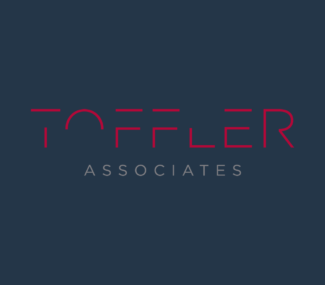The Knowledge Age Organization Has No Ladder

Markets and people are more interconnected, global competition is more intense, demographics have shifted, and we have a whole new set of communication tools. Businesses and government entities are facing the challenge and opportunity of information overload. In this Knowledge Age, we’re seeing growing evidence that a horizontal (flat) organization is more appropriate.
Conventional Second Wave wisdom posited that senior executives led most effectively by managing vertically. Particularly during times like the Industrial Era, vertical organizations did offer real advantages. They are structured for clearly defined lines of authority. That hierarchy produces a tight span of control that can elevate task-oriented productivity.
In these vertical organizations, a president or chief executive officer sits at the top echelon. A team of vice presidents, each with individual functional areas, work upward with the C-suite and Board of Directors and downward with direct reports. Each layer of the organization reports to the one directly above it, all the way up the chain to top management, and each layer has its own clearly defined functions and responsibilities. With every step lower on the chain, the level of leadership and authority decreases, but employees have a defined “career ladder” to propel them.
As the rate of change and the complexity of business have intensified, this model has become progressively outmoded. As Thomas Friedman has observed, the world has flattened. Traditional tools of hierarchy, power, and authority have struggled to change with it. A vertical model practically guarantees fragmentation, overspecialization, and an urge to control from the top. It also can stifle innovation.
Flat structures prioritize human centered design, promote collaboration, and streamline authority. At every level in an organization, employees have access to more data and more responsibility to process and disseminate intelligence. As that happens, career profiles are changing. Leaders are recognized less by title and more by function. Individuals work together to gather, analyze, and use knowledge to drive innovation, growth, and shared outcomes. Facilitating a flow of decisions from top management through the workforce makes the organization more agile in the face of shifting market dynamics. It also makes them more likely to be able to scale efficiently.
Why the Horizontal Organizational Model Works
As the world has become more hyperconnected, corporate structures have been challenged to match the new environment. They have had to dispose of the vestiges of traditional hierarchies and functional barriers. In the horizontal model, each department features several lateral functional areas and a product manager or process leader who is responsible for the end result and reports to top management. In lieu of prioritizing ranks and executives, everyone has an equal opportunity to contribute value.
There are already quite a few horizontal organization success stories, including the Ford Motor Company’s Customer Service Division, Zappos, Xerox, and Occupational Safety and Health Administration (OSHA). Perhaps the most famous example is Valve, a gaming company responsible for classics such as Half-Life and Portal. Valve has no job titles and no project mandates. Instead, employees can see and join any project. If an employee wants to start a project, they are responsible for securing funding and building a team.
While the benefits tend to outweigh the challenges, the horizontal organizational model does pose upsides as well as downsides.
Benefits of a flat organization:
- Higher employee satisfaction due to greater autonomy and job fulfillment
- Better cooperation throughout the organization through the use of cross-function teams
- Competitive advantages produced by an emphasis on innovation
- Streamlined communication and reporting processes
- Greater agility and nimble teams
Challenges of a flat organization:
- A perception of disorganization and lack of authority and control
- Finger-pointing if/when things go awry, which can hinder productivity
- Slow cultural transformation as management adjusts to a less authoritarian, more peer-like relationship with subordinates
- A tendency to revert to long-held notions as people with more tenure are perceived to have more seniority and authority
- Risk of ‘cliques’ and low individual accountability
We see the greatest success with this model in smaller, newer organizations that were ‘born flat.’ Yet, this is not an all-or-nothing proposition. Particularly in larger, legacy organizations, great progress is coming out of internal incubators and innovation programs. These internal programs give employees the chance to get ideas funded and developed to benefit the company. This modified horizontal approach allows the company to remain somewhat traditionally striated while providing a framework in which allows employees can suggest and pursue ideas, take responsibility for teams, and accomplish goals. The higher autonomy and resources, and reduced bureaucracy promotes innovation and is driving successful outcomes.
We are still very much in transition from laddered Industrial Era organizations to Knowledge Age horizontal structures. It is logical to look at a hybrid approach as having the greatest potential for immediate success. No one model will work. Your organization must consider your growth and innovation objectives, your culture, legacy, and mission.
This is the first of a two-part series on the horizontal organization. In the next installment, we will dissect the model and provide an overview of its key components. Those are the details you need to align your current objectives and leadership model against actionable steps and structures. If you haven’t yet subscribed, do so now to get these guidelines delivered to your inbox.
It’s time to rebuild the organizational model for sustainability and success in the Knowledge Age.
{{cta(‘befa9ff3-80a5-4a6c-b483-9daadb37b099’)}}
- Categories
- Workforce of the Future


 About the Authors
About the Authors